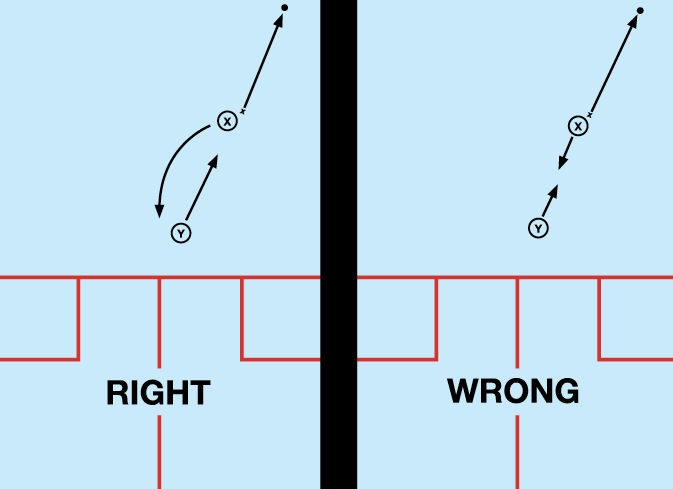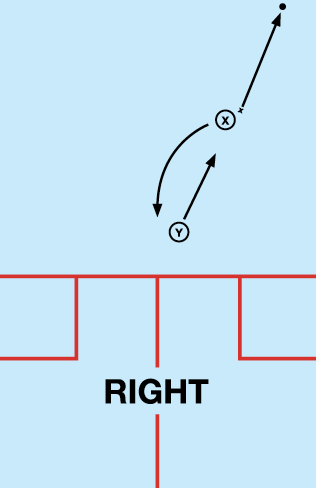By Rod Symington, WSF Referees and Rules Committee
While I was delivering several refereeing clinics recently that were attended by local coaches, something interesting emerged: the coaches realized that they needed to instruct their players about the proper way to clear out of the front corners.
 This is a common problem all over the world: A player hits a drop shot and either stands admiring it or attempts to move straight back to the T. Both options are wrong.
This is a common problem all over the world: A player hits a drop shot and either stands admiring it or attempts to move straight back to the T. Both options are wrong.
The Rules of Squash are quite clear about this: After completing your follow-through you must provide your opponent with unobstructed direct access to the ball (Rule 12.2.1). How can you do that if you stand still or move in a direct line back to the T? You cannot. If you do either of those things, you will be blocking your opponent’s access to the ball—and under the Rules, if you block, you lose the rally (and thus the point).
People often ask me: “But where I am supposed to move?” The answer is simple: Anywhere, as long as you provide your opponent unobstructed direct access to the ball.
The problem is that players often hit a poor shot that comes back towards them or into the middle of the court. If they now move in an appropriate direction to clear (e.g., towards the side wall), they find themselves out of position and the opponent can hit a winning shot.
That is how it is supposed to be! If you hit a bad shot, you must suffer the consequences. Thus if you want to stay in the rally, hit a better shot. Jonathon Powers’s coach once told him: “Don’t hit the shot if you cannot clear.”
Why do players find themselves in trouble in the front corners? For two reasons.
First, there are those who simply love to hit a drop shot and just stand there. (These are the guys who spend an hour in front of the mirror in the mornings.) They want the opponent to run around them and try to reach the ball. They often say: “You were out of position; therefore you have to run around me.” This is totally wrong: the Rules do not recognize whether a previous shot was good or bad; they insist that the striker clear, no matter how bad the opponent’s previous shot was.
Second, there are far too many players who are so obsessed with “getting back to the T,” that they pursue that goal single-mindedly. But they are also wrong: you do not have the automatic right to go back to the T. You may do so only if in so doing, you do not block your opponent’s access to the ball. As far as the front corners are concerned, the appropriate motion is by way of an arc so that you clear properly and provide your opponent the access that the Rules call for (see graphic).
In this latter case, it often happens that the opponent has placed the player under pressure—perhaps by hitting a tight boast or a drop-shot. The player reaches for the ball, is off-balance—and cannot recover in order to clear. Too bad! If your opponent has placed you under such pressure that you cannot clear in time, you deserve to lose the rally—because your opponent has played better squash than you have.
If you do not or cannot clear properly out of the front corners, be prepared to concede the rally because you are blocking. The only time you may escape this fate is if your drop-shot hits a dead nick. Go ahead and practice.


